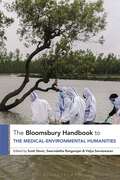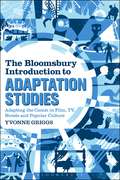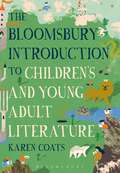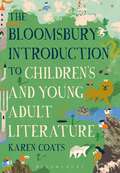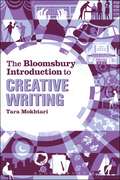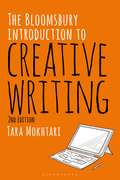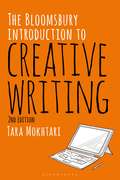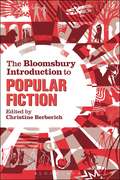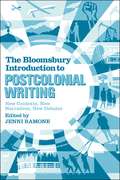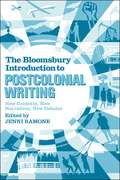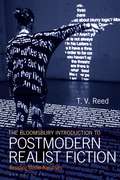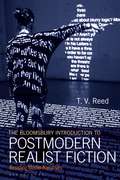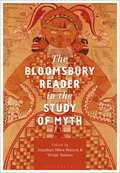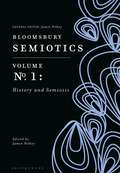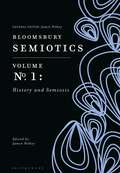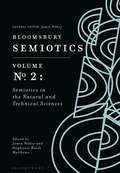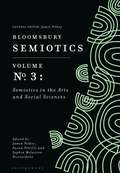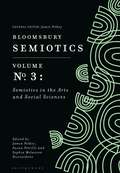- Table View
- List View
The Bloomsbury Handbook to the Medical-Environmental Humanities (Bloomsbury Handbooks)
Bringing together two parallel and occasionally intersecting disciplines - the environmental and medical humanities - this field-defining handbook reveals our ecological predicament to be a simultaneous threat to human health. The book: · Represents the first collection to bring the environmental humanities and medical humanities into conversation in a systematic way· Features contributions from a wide range of interdisciplinary perspectives including literary studies, environmental ethics and philosophy, cultural history and sociology · Adopts a truly global approach, examining contexts including, but not limited to, North America, the UK, Africa, Latin America, South Asia, Turkey and East Asia · Touches on issues and approaches such as narrative medicine, ecoprecarity, toxicity, mental health, and contaminated environments. Showcasing and surveying a rich spectrum of issues and methodologies, this book looks not only at where research currently is at the intersection of these two important fields, but also at where it is going.
The Bloomsbury Handbook to Toni Morrison (Bloomsbury Handbooks)
by Kelly L. Reames and Linda Wagner-MartinThe most substantial collection of critical essays on Morrison to appear since her death in mid-2019, this book contains previously unpublished essays which both acknowledge the universal significance of her writing even as they map new directions. Essayists include pre-eminent Morrison scholars, as well as scholars who work in cultural criticism, African American letters, American modernism, and women's writing. The book includes work on Morrison as a public intellectual; work which places Morrison's writing within today's currents of contemporary fiction; work which draws together Morrison's “trilogy” of Beloved, Jazz, and Paradise alongside Dos Passos' USA trilogy; work which links Morrison to such Black Atlantic artists as Lubaina Himid and others as well as work which offers a reading of “influence” that goes both directions between Morrison and Faulkner. Another cluster of essays treats seldom-discussed works by Morrison, including an essay on Morrison as writer of children's books and as speaker for children's education. In addition, a “Teaching Morrison” section is designed to help teachers and critics who teach Morrison in undergraduate classes. The Bloomsbury Handbook to Toni Morrison is wide-ranging, provocative, and satisfying; a fitting tribute to one of the greatest American novelists.
The Bloomsbury Handbook to Toni Morrison (Bloomsbury Handbooks)
The most substantial collection of critical essays on Morrison to appear since her death in mid-2019, this book contains previously unpublished essays which both acknowledge the universal significance of her writing even as they map new directions. Essayists include pre-eminent Morrison scholars, as well as scholars who work in cultural criticism, African American letters, American modernism, and women's writing. The book includes work on Morrison as a public intellectual; work which places Morrison's writing within today's currents of contemporary fiction; work which draws together Morrison's “trilogy” of Beloved, Jazz, and Paradise alongside Dos Passos' USA trilogy; work which links Morrison to such Black Atlantic artists as Lubaina Himid and others as well as work which offers a reading of “influence” that goes both directions between Morrison and Faulkner. Another cluster of essays treats seldom-discussed works by Morrison, including an essay on Morrison as writer of children's books and as speaker for children's education. In addition, a “Teaching Morrison” section is designed to help teachers and critics who teach Morrison in undergraduate classes. The Bloomsbury Handbook to Toni Morrison is wide-ranging, provocative, and satisfying; a fitting tribute to one of the greatest American novelists.
The Bloomsbury Introduction to Adaptation Studies: Adapting the Canon in Film, TV, Novels and Popular Culture
by Yvonne GriggsFrom David Lean's big screen Great Expectations to Alejandro Amenábar's reinvention of The Turn of the Screw as The Others, adaptations of literary classics are a constant feature of popular culture today. The Bloomsbury Introduction to Adaptation Studies helps students master the history, theory and practice of analysing literary adaptations. Following an introductory overview of major debates and concepts, each chapter focuses on a canonical text and features: - Case study readings of adaptations in a variety of media, from film to opera, televised drama to animated comedy show, YA fiction to novel/graphic novel. - Coverage of popular appropriations and re-imaginings of the text. - Discussion questions and creative exercises throughout to guide students through their own analyses. - Annotated guides to further reading and viewing plus online resources. - The book also includes chapter overviews and a glossary of critical terms to give students quick access to key information for further study, reference and revision.The Bloomsbury Introduction to Adaptation Studies covers adaptations of: Jane Eyre; Great Expectations; The Turn of the Screw; The Great Gatsby.
The Bloomsbury Introduction to Adaptation Studies: Adapting the Canon in Film, TV, Novels and Popular Culture
by Yvonne GriggsFrom David Lean's big screen Great Expectations to Alejandro Amenábar's reinvention of The Turn of the Screw as The Others, adaptations of literary classics are a constant feature of popular culture today. The Bloomsbury Introduction to Adaptation Studies helps students master the history, theory and practice of analysing literary adaptations. Following an introductory overview of major debates and concepts, each chapter focuses on a canonical text and features: - Case study readings of adaptations in a variety of media, from film to opera, televised drama to animated comedy show, YA fiction to novel/graphic novel. - Coverage of popular appropriations and re-imaginings of the text. - Discussion questions and creative exercises throughout to guide students through their own analyses. - Annotated guides to further reading and viewing plus online resources. - The book also includes chapter overviews and a glossary of critical terms to give students quick access to key information for further study, reference and revision.The Bloomsbury Introduction to Adaptation Studies covers adaptations of: Jane Eyre; Great Expectations; The Turn of the Screw; The Great Gatsby.
The Bloomsbury Introduction to Children's and Young Adult Literature
by Karen CoatsFrom Maria Edgeworth, Dr Seuss and Lewis Carroll to Sherman Alexie, Sharon Flake, and Gene Luen Yang, this is a comprehensive introduction to studying the infinitely varied worlds of literature for children and young adults. Exploring a diverse range of writing, The Bloomsbury Introduction to Children's and Young Adult Literature includes: - Chapters covering key genres and forms from fiction, nonfiction, and poetry to picture books, graphic novels and fairy tales - A history of changing ideas of childhood and adolescence - Coverage of psychological, educational and literary theoretical approaches - Practical guidance on researching, reading and writing about children's and young adult literature - Explorations of children's and young adult film, TV and new media In addition, "Extending Your Study†? sections at the end of each chapter provide advice on further reading, writing, discussion and online resources as well as case study responses from writers and teachers in the field. Accessibly written for both students new to the subject and experienced teachers, this is the most comprehensive single volume introduction to the study of writing for young people.
The Bloomsbury Introduction to Children's and Young Adult Literature
by Karen CoatsFrom Maria Edgeworth, Dr Seuss and Lewis Carroll to Sherman Alexie, Sharon Flake, and Gene Luen Yang, this is a comprehensive introduction to studying the infinitely varied worlds of literature for children and young adults. Exploring a diverse range of writing, The Bloomsbury Introduction to Children's and Young Adult Literature includes: - Chapters covering key genres and forms from fiction, nonfiction, and poetry to picture books, graphic novels and fairy tales - A history of changing ideas of childhood and adolescence - Coverage of psychological, educational and literary theoretical approaches - Practical guidance on researching, reading and writing about children's and young adult literature - Explorations of children's and young adult film, TV and new media In addition, “Extending Your Study” sections at the end of each chapter provide advice on further reading, writing, discussion and online resources as well as case study responses from writers and teachers in the field. Accessibly written for both students new to the subject and experienced teachers, this is the most comprehensive single volume introduction to the study of writing for young people.
The Bloomsbury Introduction to Creative Writing
by Tara MokhtariCovering a wide range of forms and genres, The Bloomsbury Introduction to Creative Writing is a complete introductory manual for students of creative writing. Through a structured series of practical writing exercises – perfect for the classroom, the writer's workshop or as a starting point for a portfolio of work – the book builds the student writer from the first explorations of their own voice, through to mastery of a wide range of genres and forms. The Bloomsbury Introduction to Creative Writing covers such genres as: · Autobiographical writing · Short fiction · Poetry · Screenwriting · Writing for performance · Writing for digital media With practical guidance on writing scholarly critiques of your own work and a glossary of terms for ease of reference, this book is an essential manual for any introductory creative writing course and a practical companion for more advanced writers.
The Bloomsbury Introduction to Creative Writing
by Tara MokhtariCovering all of the major genres, The Bloomsbury Introduction to Creative Writing is a complete introductory manual for students of creative writing. Now in its second edition, the book features an updated and expanded chapter on writing for digital media, and new exercises for reading across the genres and writing hybrid forms. Through a structured series of practical writing exercises – perfect for the classroom, the writer's workshop or as a starting point for a portfolio of work – the book builds the student writer from the first explorations of voice and the relationship between writing and knowledge, through to mastery of a wide range of genres and forms. The Bloomsbury Introduction to Creative Writing covers such genres as: · Autobiographical writing · Short fiction · Poetry · Screenwriting and writing for performance · Writing for digital media, including video games and social media With practical guidance on writing scholarly critiques of your own work and a glossary of terms for ease of reference, The Bloomsbury Introduction to Creative Writing is an essential manual for any introductory creative writing course and a practical companion for more advanced writers.
The Bloomsbury Introduction to Creative Writing
by Tara MokhtariCovering all of the major genres, The Bloomsbury Introduction to Creative Writing is a complete introductory manual for students of creative writing. Now in its second edition, the book features an updated and expanded chapter on writing for digital media, and new exercises for reading across the genres and writing hybrid forms. Through a structured series of practical writing exercises – perfect for the classroom, the writer's workshop or as a starting point for a portfolio of work – the book builds the student writer from the first explorations of voice and the relationship between writing and knowledge, through to mastery of a wide range of genres and forms. The Bloomsbury Introduction to Creative Writing covers such genres as: · Autobiographical writing · Short fiction · Poetry · Screenwriting and writing for performance · Writing for digital media, including video games and social media With practical guidance on writing scholarly critiques of your own work and a glossary of terms for ease of reference, The Bloomsbury Introduction to Creative Writing is an essential manual for any introductory creative writing course and a practical companion for more advanced writers.
The Bloomsbury Introduction to Creative Writing
by Tara MokhtariCovering a wide range of forms and genres, The Bloomsbury Introduction to Creative Writing is a complete introductory manual for students of creative writing. Through a structured series of practical writing exercises – perfect for the classroom, the writer's workshop or as a starting point for a portfolio of work – the book builds the student writer from the first explorations of their own voice, through to mastery of a wide range of genres and forms. The Bloomsbury Introduction to Creative Writing covers such genres as: · Autobiographical writing · Short fiction · Poetry · Screenwriting · Writing for performance · Writing for digital media With practical guidance on writing scholarly critiques of your own work and a glossary of terms for ease of reference, this book is an essential manual for any introductory creative writing course and a practical companion for more advanced writers.
The Bloomsbury Introduction to Popular Fiction
by Christine BerberichGuiding readers through key writers and genres, historical contexts and major theoretical approaches, this is a comprehensive introduction to the study of popular fiction. Charting the rise of commercial fiction from the 19th century to today, The Bloomsbury Introduction to Popular Fiction includes introductory surveys, written by leading scholars, to a wide range of popular genres, including: Science Fiction Crime Writing Romance and Chick Lit Adventure Stories and Lad Lit Horror Graphic Novels Children's Literature Part II of the book also includes case-study readings of key writers and texts, from the work of HG Wells, Ian Fleming and Raymond Chandler to more recent books such as Pride and Prejudice and Zombies. The book also includes a chapter covering "The Writer's Perspective" on popular publishing, while annotated guides to further reading and online resources throughout give students the tools they need to pursue independent study on their courses.
The Bloomsbury Introduction to Popular Fiction
by Christine BerberichGuiding readers through key writers and genres, historical contexts and major theoretical approaches, this is a comprehensive introduction to the study of popular fiction. Charting the rise of commercial fiction from the 19th century to today, The Bloomsbury Introduction to Popular Fiction includes introductory surveys, written by leading scholars, to a wide range of popular genres, including: Science Fiction Crime Writing Romance and Chick Lit Adventure Stories and Lad Lit Horror Graphic Novels Children's Literature Part II of the book also includes case-study readings of key writers and texts, from the work of HG Wells, Ian Fleming and Raymond Chandler to more recent books such as Pride and Prejudice and Zombies. The book also includes a chapter covering "The Writer's Perspective" on popular publishing, while annotated guides to further reading and online resources throughout give students the tools they need to pursue independent study on their courses.
The Bloomsbury Introduction to Postcolonial Writing: New Contexts, New Narratives, New Debates
by Jenni RamoneCovering a wide range of textual forms and geographical locations, The Bloomsbury Introduction to Postcolonial Writing: New Contexts, New Narratives, New Debates is an advanced introduction to prominent issues in contemporary postcolonial literary studies. With chapters written by leading scholars in the field, The Bloomsbury Introduction to Postcolonial Writing includes: ·Explorations of key contemporary topics, from ecocriticism, refugeeism, economics, faith and secularism, and gender and sexuality, to the impact of digital humanities on postcolonial studies ·Introductions to a wide range of genres, from the novel, theatre and poetry to life-writing, graphic novels, film and games · In-depth analysis of writing from many postcolonial regions including Africa, South Asia, the Caribbean and Latin America, and African American writing Covering Anglophone and Francophone texts and contexts, and tackling the relationship between postcolonial studies and world literature, with a glossary of key critical terms, this is an essential text for all students and scholars of contemporary postcolonial studies.
The Bloomsbury Introduction to Postcolonial Writing: New Contexts, New Narratives, New Debates
by Jenni RamoneCovering a wide range of textual forms and geographical locations, The Bloomsbury Introduction to Postcolonial Writing: New Contexts, New Narratives, New Debates is an advanced introduction to prominent issues in contemporary postcolonial literary studies. With chapters written by leading scholars in the field, The Bloomsbury Introduction to Postcolonial Writing includes: ·Explorations of key contemporary topics, from ecocriticism, refugeeism, economics, faith and secularism, and gender and sexuality, to the impact of digital humanities on postcolonial studies ·Introductions to a wide range of genres, from the novel, theatre and poetry to life-writing, graphic novels, film and games · In-depth analysis of writing from many postcolonial regions including Africa, South Asia, the Caribbean and Latin America, and African American writing Covering Anglophone and Francophone texts and contexts, and tackling the relationship between postcolonial studies and world literature, with a glossary of key critical terms, this is an essential text for all students and scholars of contemporary postcolonial studies.
The Bloomsbury Introduction to Postmodern Realist Fiction: Resisting Master Narratives
by T.V. ReedPostmodern realist fiction uses realism-disrupting literary techniques to make interventions into the real social conditions of our time. It seeks to capture the complex, fragmented nature of contemporary experience while addressing crucial issues like income inequality, immigration, the climate crisis, terrorism, ever-changing technologies, shifting racial, sex and gender roles, and the rise of new forms of authoritarianism. A lucid, comprehensive introduction to the genre as well as to a wide variety of voices, this book discusses more than forty writers from a diverse range of backgrounds, and over several decades, with special attention to 21st-century novels. Writers covered include: Kathy Acker, Chimamanda Ngozi Adiche, Julia Alvarez, Sherman Alexie, Gloria Anzaldua, Margaret Atwood, Toni Cade Bambara, A.S. Byatt, Octavia Butler, Angela Carter, Ana Castillo, Don DeLillo, Junot Diaz, Jennifer Egan, Awaeki Emezi, Mohsin Hamid, Jessica Hagedorn, Maxine Hong Kingston, Ursula K. Le Guin, Daisy Johnson, Bharati Mukherjee, Toni Morrison, Vladimir Nabokov, Tommy Orange, Ruth Ozeki, Ishmael Reed, Eden Robinson, Salman Rushdie, Jean Rhys, Leslie Marmon Silko, Art Spiegelman, Kurt Vonnegut, and Jeannette Winterson, among others.
The Bloomsbury Introduction to Postmodern Realist Fiction: Resisting Master Narratives
by T.V. ReedPostmodern realist fiction uses realism-disrupting literary techniques to make interventions into the real social conditions of our time. It seeks to capture the complex, fragmented nature of contemporary experience while addressing crucial issues like income inequality, immigration, the climate crisis, terrorism, ever-changing technologies, shifting racial, sex and gender roles, and the rise of new forms of authoritarianism. A lucid, comprehensive introduction to the genre as well as to a wide variety of voices, this book discusses more than forty writers from a diverse range of backgrounds, and over several decades, with special attention to 21st-century novels. Writers covered include: Kathy Acker, Chimamanda Ngozi Adiche, Julia Alvarez, Sherman Alexie, Gloria Anzaldua, Margaret Atwood, Toni Cade Bambara, A.S. Byatt, Octavia Butler, Angela Carter, Ana Castillo, Don DeLillo, Junot Diaz, Jennifer Egan, Awaeki Emezi, Mohsin Hamid, Jessica Hagedorn, Maxine Hong Kingston, Ursula K. Le Guin, Daisy Johnson, Bharati Mukherjee, Toni Morrison, Vladimir Nabokov, Tommy Orange, Ruth Ozeki, Ishmael Reed, Eden Robinson, Salman Rushdie, Jean Rhys, Leslie Marmon Silko, Art Spiegelman, Kurt Vonnegut, and Jeannette Winterson, among others.
The Bloomsbury Reader in the Study of Myth
by Jonathan Miles-Watson Vivian AsimosWhat is myth? Why do myths exist? What do myths do? Where are myths going? This reader is organized into 4 parts which explore these questions. Drawing on over 10 years of experience teaching myth in religious studies and anthropology departments in the UK, USA and Continental Europe the editors have brought together key works in the theory of myth. Key features include: - a general introduction to the reader that outlines a comparative and interpretative framework - an introduction contextualizing each part and sub-section - an introduction to each reading by the editors - a companion website that provides discussion questions and further reading suggestions, including primary sources. From functionalism to feminism, nationalism to globalization, and psychoanalysis to spatial analysis, this reader covers the classic and contemporary theories and approaches needed to understand what myth is, why myths exist, what they do, and what the future holds for them.
The Bloomsbury Reader in the Study of Myth
What is myth? Why do myths exist? What do myths do? Where are myths going? This reader is organized into 4 parts which explore these questions. Drawing on over 10 years of experience teaching myth in religious studies and anthropology departments in the UK, USA and Continental Europe the editors have brought together key works in the theory of myth. Key features include: - a general introduction to the reader that outlines a comparative and interpretative framework - an introduction contextualizing each part and sub-section - an introduction to each reading by the editors - a companion website that provides discussion questions and further reading suggestions, including primary sources. From functionalism to feminism, nationalism to globalization, and psychoanalysis to spatial analysis, this reader covers the classic and contemporary theories and approaches needed to understand what myth is, why myths exist, what they do, and what the future holds for them.
Bloomsbury Semiotics Volume 1: Chiasmus, Cognition, And Extreme Body Memory (Bloomsbury Advances In Semiotics Ser.)
by Jamin PelkeyBloomsbury Semiotics offers a state-of-the-art overview of the entire field of semiotics by revealing its influence on a wide range of disciplinary perspectives. With four volumes spanning theory, method and practice across the disciplines, this definitive reference work emphasizes and strengthens common bonds shared across intellectual cultures, and facilitates the discovery and recovery of meaning across fields. It comprises: Volume 1: History and SemiosisVolume 2: Semiotics in the Natural and Technical SciencesVolume 3: Semiotics in the Arts and Social SciencesVolume 4: Semiotic MovementsWritten by leading international experts, the chapters provide comprehensive overviews of the history and status of semiotic inquiry across a diverse range of traditions and disciplines. Together, they highlight key contemporary developments and debates along with ongoing research priorities. Providing the most comprehensive and united overview of the field, Bloomsbury Semiotics enables anyone, from students to seasoned practitioners, to better understand and benefit from semiotic insight and how it relates to their own area of study or research.Volume 1: History and Semiosis provides a general and historical orientation to semiotic traditions and their methodologies, followed by an in-depth overview of critical issues in the study of sign systems and semiosis. It ends with an exploration of issues of sign classification and practical application, setting the scene for the remaining volumes.
Bloomsbury Semiotics Volume 1: History and Semiosis
Bloomsbury Semiotics offers a state-of-the-art overview of the entire field of semiotics by revealing its influence on a wide range of disciplinary perspectives. With four volumes spanning theory, method and practice across the disciplines, this definitive reference work emphasizes and strengthens common bonds shared across intellectual cultures, and facilitates the discovery and recovery of meaning across fields. It comprises: Volume 1: History and SemiosisVolume 2: Semiotics in the Natural and Technical SciencesVolume 3: Semiotics in the Arts and Social SciencesVolume 4: Semiotic MovementsWritten by leading international experts, the chapters provide comprehensive overviews of the history and status of semiotic inquiry across a diverse range of traditions and disciplines. Together, they highlight key contemporary developments and debates along with ongoing research priorities. Providing the most comprehensive and united overview of the field, Bloomsbury Semiotics enables anyone, from students to seasoned practitioners, to better understand and benefit from semiotic insight and how it relates to their own area of study or research.Volume 1: History and Semiosis provides a general and historical orientation to semiotic traditions and their methodologies, followed by an in-depth overview of critical issues in the study of sign systems and semiosis. It ends with an exploration of issues of sign classification and practical application, setting the scene for the remaining volumes.
Bloomsbury Semiotics Volume 2: Semiotics in the Natural and Technical Sciences
by Jamin Pelkey and Stéphanie Walsh MatthewsBloomsbury Semiotics offers a state-of-the-art overview of the entire field of semiotics by revealing its influence on a wide range of disciplinary perspectives. With four volumes spanning theory, method and practice across the disciplines, this definitive reference work emphasizes and strengthens common bonds shared across intellectual cultures, and facilitates the discovery and recovery of meaning across fields. It comprises: Volume 1: History and SemiosisVolume 2: Semiotics in the Natural and Technical SciencesVolume 3: Semiotics in the Arts and Social SciencesVolume 4: Semiotic MovementsWritten by leading international experts, the chapters provide comprehensive overviews of the history and status of semiotic inquiry across a diverse range of traditions and disciplines. Together, they highlight key contemporary developments and debates along with ongoing research priorities. Providing the most comprehensive and united overview of the field, Bloomsbury Semiotics enables anyone, from students to seasoned practitioners, to better understand and benefit from semiotic insight and how it relates to their own area of study or research.Volume 2: Semiotics in the Natural and Technical Sciences presents the state-of-the art in semiotic approaches to disciplines ranging from mathematics and biology to neuroscience and medicine, from evolutionary linguistics and animal behaviour studies to computing, finance, law, architecture, and design. Each chapter casts a vision for future research priorities, unanswered questions, and fresh openings for semiotic participation in these and related fields.
Bloomsbury Semiotics Volume 2: Semiotics in the Natural and Technical Sciences
Bloomsbury Semiotics offers a state-of-the-art overview of the entire field of semiotics by revealing its influence on a wide range of disciplinary perspectives. With four volumes spanning theory, method and practice across the disciplines, this definitive reference work emphasizes and strengthens common bonds shared across intellectual cultures, and facilitates the discovery and recovery of meaning across fields. It comprises: Volume 1: History and SemiosisVolume 2: Semiotics in the Natural and Technical SciencesVolume 3: Semiotics in the Arts and Social SciencesVolume 4: Semiotic MovementsWritten by leading international experts, the chapters provide comprehensive overviews of the history and status of semiotic inquiry across a diverse range of traditions and disciplines. Together, they highlight key contemporary developments and debates along with ongoing research priorities. Providing the most comprehensive and united overview of the field, Bloomsbury Semiotics enables anyone, from students to seasoned practitioners, to better understand and benefit from semiotic insight and how it relates to their own area of study or research.Volume 2: Semiotics in the Natural and Technical Sciences presents the state-of-the art in semiotic approaches to disciplines ranging from mathematics and biology to neuroscience and medicine, from evolutionary linguistics and animal behaviour studies to computing, finance, law, architecture, and design. Each chapter casts a vision for future research priorities, unanswered questions, and fresh openings for semiotic participation in these and related fields.
Bloomsbury Semiotics Volume 3: Semiotics in the Arts and Social Sciences
by Jamin Pelkey, Susan Petrilli and Sophia Melanson RicciardoneBloomsbury Semiotics offers a state-of-the-art overview of the entire field of semiotics by revealing its influence on a wide range of disciplinary perspectives. With four volumes spanning theory, method and practice across the disciplines, this definitive reference work emphasizes and strengthens common bonds shared across intellectual cultures, and facilitates the discovery and recovery of meaning across fields. It comprises: Volume 1: History and SemiosisVolume 2: Semiotics in the Natural and Technical SciencesVolume 3: Semiotics in the Arts and Social SciencesVolume 4: Semiotic MovementsWritten by leading international experts, the chapters provide comprehensive overviews of the history and status of semiotic inquiry across a diverse range of traditions and disciplines. Together, they highlight key contemporary developments and debates along with ongoing research priorities. Providing the most comprehensive and united overview of the field, Bloomsbury Semiotics enables anyone, from students to seasoned practitioners, to better understand and benefit from semiotic insight and how it relates to their own area of study or research.Volume 3: Semiotics in the Arts and Social Sciences presents the state-of-the art in semiotic approaches to disciplines ranging from philosophy and anthropology to history and archaeology, from sociology and religious studies to music, dance, rhetoric, literature, and structural linguistics. Each chapter goes casts a vision for future research priorities, unanswered questions, and fresh openings for semiotic participation in these and related fields.
Bloomsbury Semiotics Volume 3: Semiotics in the Arts and Social Sciences
Bloomsbury Semiotics offers a state-of-the-art overview of the entire field of semiotics by revealing its influence on a wide range of disciplinary perspectives. With four volumes spanning theory, method and practice across the disciplines, this definitive reference work emphasizes and strengthens common bonds shared across intellectual cultures, and facilitates the discovery and recovery of meaning across fields. It comprises: Volume 1: History and SemiosisVolume 2: Semiotics in the Natural and Technical SciencesVolume 3: Semiotics in the Arts and Social SciencesVolume 4: Semiotic MovementsWritten by leading international experts, the chapters provide comprehensive overviews of the history and status of semiotic inquiry across a diverse range of traditions and disciplines. Together, they highlight key contemporary developments and debates along with ongoing research priorities. Providing the most comprehensive and united overview of the field, Bloomsbury Semiotics enables anyone, from students to seasoned practitioners, to better understand and benefit from semiotic insight and how it relates to their own area of study or research.Volume 3: Semiotics in the Arts and Social Sciences presents the state-of-the art in semiotic approaches to disciplines ranging from philosophy and anthropology to history and archaeology, from sociology and religious studies to music, dance, rhetoric, literature, and structural linguistics. Each chapter goes casts a vision for future research priorities, unanswered questions, and fresh openings for semiotic participation in these and related fields.
